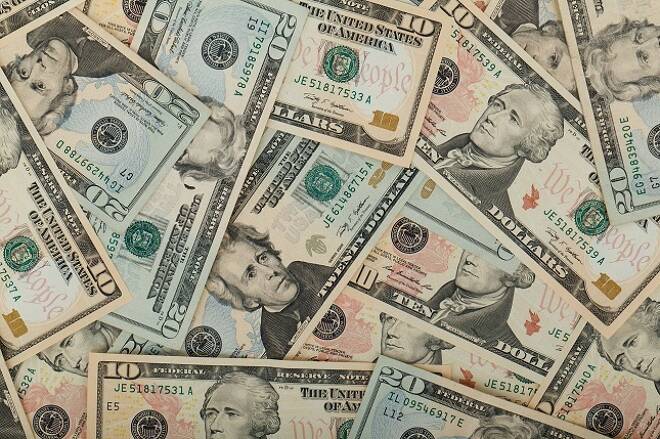Advertisement
Advertisement
Dollar/Yen Pressured After Trump Threatens More Tariffs on China
By:
After Trump’s latest announcement, the Japanese Yen rallied against the U.S. Dollar as investors sought shelter in the safe haven currency amid weakness in the global equity markets.
The U.S. Dollar hit a two-week high against a basket of currencies on Thursday, helped by a rebound on Wall Street and signs the United States is looking to resolve a trade dispute with China.
June U.S. Dollar Index futures settled at 90.154, up 0.371 or +0.41%.
Some of these gains were erased however early Friday after U.S. President Donald Trump said he had instructed U.S. trade officials to consider $100 billion in additional tariffs on China.
Trump said in a statement on Thursday that further tariffs were being considered “in light of China’s unfair retaliation” against earlier U.S. trade actions that have triggered volatile responses in the global financial markets.
After Trump’s latest announcement, the Japanese Yen rallied against the U.S. Dollar as investors sought shelter in the safe haven currency amid weakness in the global equity markets.
U.S. Economic Reports
There were no major reports on Thursday as most traders remained focused on Friday’s U.S. Non-Farm Payrolls report.
The Challenger Job Cuts report rose 39.4% versus the previously reported -4.3%. The private survey showed companies announced plans to cut 60,357 jobs in March. The number represents nearly double the previous month, when 35,369 cuts were announced.
“Last month’s plans may indicate that growth could be slowing down, especially as the market continues to tighten,” CEO John Challenger said in a statement.
“The growth and job creation we’ve seen over the last few months may be coming to an end. As wages grow and the labor market tightens, companies are going to switch to a no-risk strategy and potentially begin contracting,” Challenger said.
Weekly Unemployment Claims came in higher than expected at 242K. Analysts were looking for 225K. The report hit a 45-year low the previous week at 218K.
Finally, the Federal Reserve should get interest rates up to neutral and then take a wait-and-see approach from there, said Atlanta Fed President Raphael Bostic, on Thursday.
“Getting us back to neutral should be a priority,” Bostic said in an interview on Bloomberg TV.
In the interview, Bostic said inflation is trending in the right direction and should hit the Fed’s 2% target in the next quarter or two.
Gold
Gold futures plunged on Thursday in reaction to the easing of tensions between the U.S. and China. The selling was driven as investors shed the safe haven asset amid a stronger U.S. Dollar and increased demand for higher risk assets.
Early Friday, the market is trading higher as safe haven buyers have returned. This time, it’s the weaker dollar and falling equity markets bolstering prices. The news that President Trump instructed U.S. trade officials to consider $100 billion in additional tariffs on China is driving today’s early price action.
Crude Oil
U.S. West Texas Intermediate and international-benchmark Brent crude oil futures finished marginally higher on Thursday, boosted by a recovery in U.S. stock markets and Saudi Arabia’s unexpected price hike in crude prices. However, a stronger U.S. Dollar helped limit gains.
Early Friday, the crude oil market is giving back some of the gains in reaction to the news that President Trump had ordered U.S. trade officials to consider an additional $100 billion in tariffs on China, escalating tensions with China.
In other news, Qatar said OPEC supply cuts should continue.
About the Author
James Hyerczykauthor
James Hyerczyk is a U.S. based seasoned technical analyst and educator with over 40 years of experience in market analysis and trading, specializing in chart patterns and price movement. He is the author of two books on technical analysis and has a background in both futures and stock markets.
Did you find this article useful?
Latest news and analysis
Advertisement
